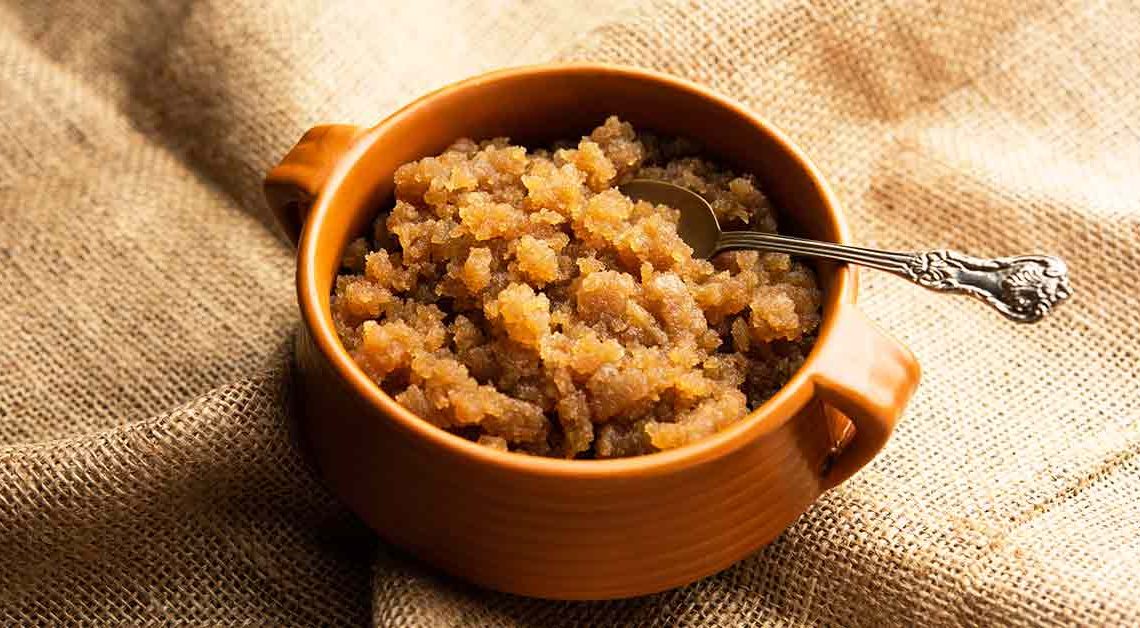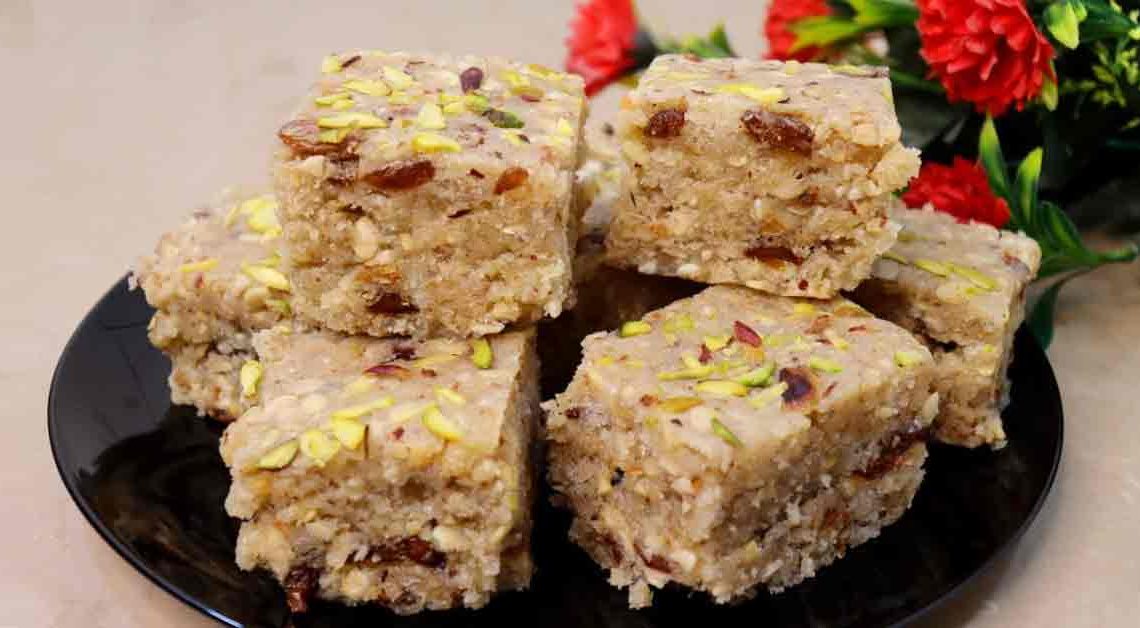From Wheat to Sweet:Exploring Atta Halwa

Welcome to Mithainama journey that’s as comforting as it is delightful – the world of Atta Halwa! In a time when life often feels like a whirlwind of chaos, there’s something immensely soothing about diving into the rich, aromatic, and heartwarming embrace of this traditional Indian dessert. Atta Halwa, or wheat flour pudding, has been a staple in Indian households for generations, a sweet that transcends mere taste to become a heartfelt experience.
Picture this: golden grains of wheat flour toasted to perfection in ghee, with a heady infusion of fragrant cardamom, saffron, and roasted nuts. The transformation from a humble pantry ingredient to a mouthwatering, soul-warming treat is nothing short of magical.
In this culinary adventure, we’ll explore the history, the regional variations, and the modern twists on this classic sweet. Get ready to embrace the intoxicating aromas, rich textures, and mouthwatering flavors of Atta Halwa as we embark on this delicious voyage.
Let’s stir up some love, one spoonful at a time!
Origin of Atta Halwa
Atta Halwa, also known as “Wheat Flour Halwa,” is a traditional Indian dessert with deep-rooted cultural and historical significance. While it’s challenging to pinpoint an exact date or place of origin, it has been a cherished sweet treat in the Indian subcontinent for centuries.
The concept of making a halwa-like dish using wheat flour is believed to have ancient roots in Indian culinary traditions. Grains, particularly wheat, have been dietary staples in the Indian subcontinent for millennia, and various recipes and techniques for transforming wheat flour into sweet dishes have been passed down through generations.
The tradition of making wheat-based sweets like it is closely tied to Indian festivities and religious rituals. It is commonly prepared during religious ceremonies, festivals, and special occasions. In many Indian households, Atta Halwa is often offered as a prasad in temples.
Different regions of India have their own variations of wheat flour pudding with varying ingredients and preparation methods. It’s typically made with wheat flour, ghee, sugar or jaggery, and flavored with cardamom, saffron, and nuts like almonds, cashews, or pistachios.
History of Atta Halwa
Atta Halwa, a beloved Indian dessert, carries a rich history deeply entwined with the culture and culinary traditions of the Indian subcontinent. While its precise origins are challenging to trace, history can be appreciated through its evolution and cultural significance.
Wheat, a staple crop in India for centuries, forms the foundation of halwa. The art of transforming wheat flour into a sweet delicacy likely dates back to ancient times. Initially, it was prepared by toasting wheat flour in ghee, lending it a distinct nutty flavor.
Every region of India has its unique take on wheat flour pudding, with variations in ingredients and flavors, showcasing the diversity of Indian culinary traditions. This dessert symbolizes the spirit of Indian hospitality, and its adaptability to local tastes and ingredients has made it a cherished part of Indian cuisine, carrying forward a history rich in tradition, taste, and cultural heritage.
Cultural Significance
Atta Halwa holds significant cultural importance in the Indian subcontinent. Its presence in various cultural and religious contexts has made it a cherished and symbolic dessert in the region. Here are some aspects of its cultural significance:
Religious Offerings: wheat flour pudding is frequently offered as prasad in Hindu temples during religious ceremonies and festivals. It symbolizes a sweet blessing from the deity and is shared among devotees as a form of divine grace. This tradition highlights the dessert’s close connection to spirituality.
Festivals and Celebrations: It is a popular sweet during Indian festivals and celebrations. It is often prepared during Diwali (the Festival of Lights), Holi (the Festival of Colors), and other special occasions, signifying the festive spirit and togetherness. Sharing with family and friends is a gesture of love and celebration.
Comfort and Hospitality: It is a quintessential dessert for expressing hospitality and warmth. When guests visit an Indian home, serving it is a traditional way to extend a warm welcome and make them feel cherished.
Where is Atta Halwa Famous?
Atta Halwa is famous and enjoyed throughout the Indian subcontinent, including India, Pakistan, and Bangladesh. It is a beloved dessert that holds a special place in the culinary traditions of these countries. Here’s a closer look at where it is particularly famous:
India: It is an integral part of Indian cuisine and is enjoyed across the country. It is prepared in homes, sweet shops, and restaurants, and it features prominently in various regional cuisines. It is especially popular in North India, where it is a common sweet dish during festivals, religious ceremonies, and family celebrations.
Pakistan: In Pakistan, it is also known as “Aate ka Halwa” or “Wheat Flour Halwa,” is a popular dessert. It is often made during Ramadan and other special occasions. Like in India, it is prepared with variations in recipe and flavor preferences in different regions of Pakistan.
Bangladesh: Atta Halwa, referred to as “Gur’er Roshogolla,” is appreciated in Bangladesh as well. It is typically made using jaggery and is enjoyed as a sweet treat during various celebrations and family gatherings.
Interesting Facts and Trivia
Atta Halwa is a delightful and culturally significant dessert in the Indian subcontinent. Here are some interesting facts and trivia related to Atta Halwa:
- It is often offered as prasad in Hindu temples during religious ceremonies, symbolizing a divine blessing and a form of spiritual sharing.
- wheat flour pudding is known by various names in different regions and languages. For example, in North India, it’s simply called “Atta Halwa,” while in some parts of South India, it is known as “Godhuma Rava Kesari.”
- It is considered a relatively healthy dessert compared to many others because it’s made from whole wheat flour, ghee, and often includes dry fruits and nuts, providing a good source of energy and nutrients.atta halwa
- Whole wheat flour pudding is typically enjoyed as a dessert, it can also be served as a breakfast item or a sweet snack.
- The combination of toasted wheat flour, ghee, and aromatic spices like cardamom lends its characteristic nutty flavor and a delightful, granular texture.
Did You Know?
Atta Halwa is not only a delectable treat but also offers several health benefits when consumed in moderation:
- Wheat flour pudding is made from whole wheat flour, which retains the bran and germ, making it a good source of essential nutrients, including dietary fiber, vitamins, and minerals.
- Its combination of wheat flour and ghee provides a quick and sustained source of energy, making it an excellent choice for an energy-packed breakfast or snack.
- The dietary fiber in whole wheat promotes healthy digestion, helps prevent constipation, and keeps the digestive system functioning smoothly.
- Atta Halwa’s rich, granular texture and nutty flavor can help control appetite and reduce the tendency to overeat, making it a satisfying and wholesome dessert.
- The presence of whole wheat is associated with heart-healthy benefits. It can help regulate cholesterol levels and lower the risk of heart diseases.







